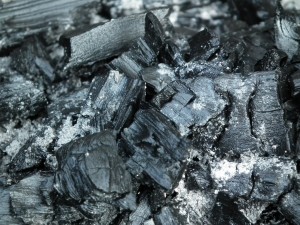By Suraj Rajendran, Staff Writer for Save the Water™ | March 16, 2017
At 1,100 acres, Sutton Lake is home to schools of largemouth bass, catfish, and crappie. Unfortunately, the lake also contains high levels of selenium, as Duke University scientists at the Nicholas School of the Environment showed using results of a study in which two of three lakes were sampled in the area for selenium concentrations. Both in the surface water and in muscles of fish, selenium levels were high due to years of coal ash discharge from the Duke Energy power plants near their shores.3
In all of the lakes that were sampled, selenium was found. In Sutton Lake, eighty-five percent of all fish muscle samples examined contained selenium levels above the Environmental Protection Agency (EPA)’s threshold of 11.3 parts per million. In Mayo Lake near the Roxboro plant, a whopping 27 percent of water samples exceeded EPA criteria. All of the surface water samples in Sutton tested above the EPA threshold for selenium of 1.5 parts per billion. Levels were below the EPA criteria only in Mountain Island Lake near the Riverbend plant in Charlotte, at least for now.2
With selenium such a big problem in Sutton Lake and surrounding bodies of water, we ask ourselves why selenium is a dangerous contaminant. As it turns out selenium has many attributes that make it harmful. To start off, selenium is a metal usually found in natural deposits as ores. At low levels, selenium is actually an essential nutrient but the EPA has found that selenium potentially causes many harmful health effects when people are exposed to it at levels above the maximum contaminant level (MCL) for relatively short periods of time (Presser, 2006). These effects include changes to hair and fingernails, damage to the peripheral nervous system, and lapses of fatigue and irritability.1 What’s more, selenium accumulates in living tissue and when it surpasses a certain level of toxicity, health symptoms such as those listed start to appear.4
Selenium is just one of many contaminants that originate from coal ash, cleverly termed “coal ash toxins.” These include some of the earth’s deadliest toxins: arsenic, lead, mercury, cadmium, and chromium. Similar to what happened in Sutton Lake, toxic metals in coal ash can leach out of ash disposal sites, especially wet storage, and contaminate surface waters and underground aquifers, where they can cause cancer and neurological harm in humans and can poison fish. There are nearly a thousand sites at which coal ash is disposed of across the nation. With 584 surface ponds and 337 dry landfills, coal ash ranks as the second-largest industrial waste stream in the United States, after mining wastes.1
Fortunately, not everything is bad news. A study funded by the European Union showed that it was possible to implement microbiological treatment of selenium, a so-called “dissimilatory metal reduction”. Selenium-reducing microorganisms are highly exclusive for selenate, reducing it to an insoluble, less-toxic elemental form that can most likely be recovered from the process. Biological treatment systems come in many varieties but are typically in the form of attached-growth reactors utilizing bacterial biofilm on a media surface. They include packed bed reactors (PBRs), fluidized bed reactors (FBRs), moving bed biological reactors (MBBRs), and electro-biochemical reactors (EBRs).5
Now it’s up to the government to implement comprehensive regulation regarding pollution by coal ash and its various toxins. Without regulation, water systems like Sutton Lake and Mayo Lake will soon be overwhelmed with contaminants.
References
- Cantrell, M. A., Brye, K. R., Miller, D. M., Mason, E., & Fairey, J. (2014). Extraction Characteristics of Selenium as Affected by Coal Fly Ash Type, Water Extractant, and Extraction Time. Journal of Environmental Protection, 05(12), 1126-1144. doi:10.4236/jep.2014.512111
- Coal ash selenium found in fish in North Carolina lakes. (2017, February 7). Retrieved March 21, 2017, from https://www.sciencedaily.com/releases/2017/02/170207162115.htm
- Hendersonbhenderson@charlotteobserver.com, B. (n.d.). Element from coal ash that can cause deformities in fish found in NC lakes. Retrieved March 21, 2017, from http://www.charlotteobserver.com/news/local/article131283579.html
- Presser, T. S., & Luoma, S. N. (2006). Forecasting selenium discharges to the San Francisco Bay-Delta Estuary: ecological effects of a proposed San Luis drain extension (United States, Department of Interior). Reston, VA: U.S. Dept. of the Interior, U.S. Geological Survey.
- Reinsel, M. (2016, January 15). Selenium Removal Technologies: A Review. Retrieved March 21, 2017, from https://www.wateronline.com/doc/selenium-removal-technologies-a-review-0001


